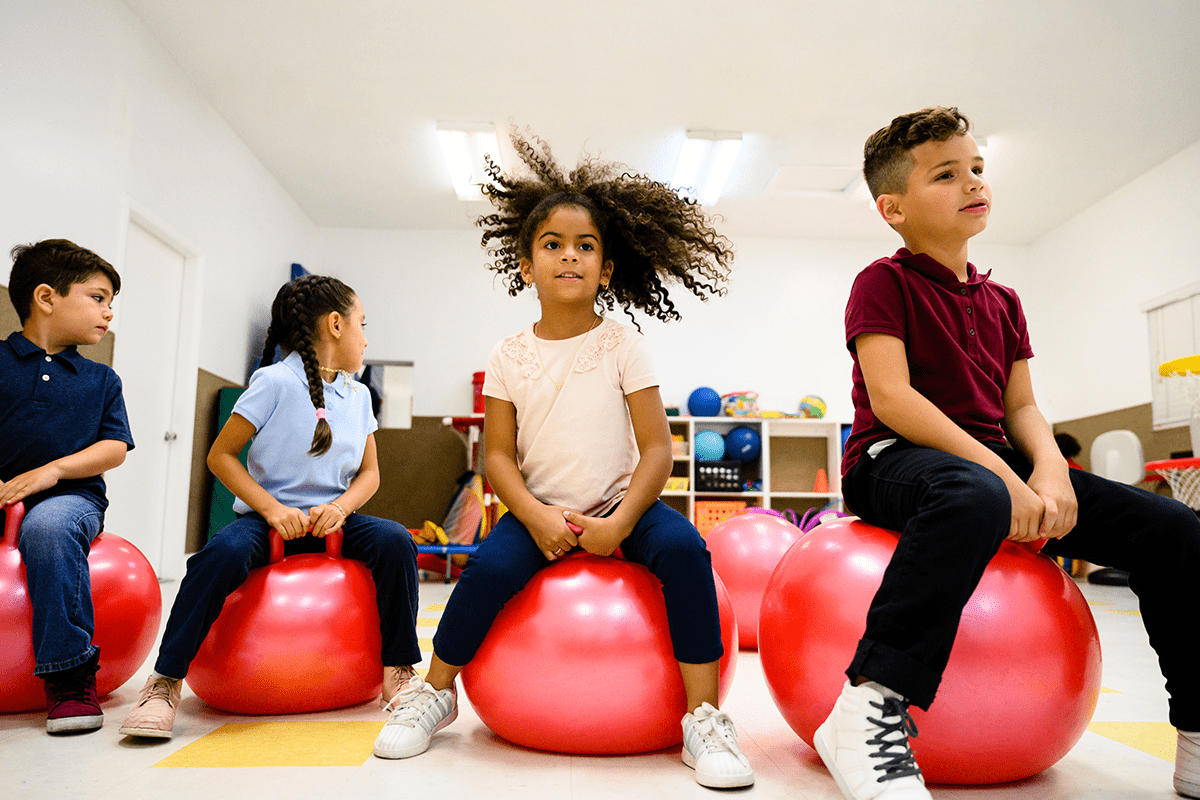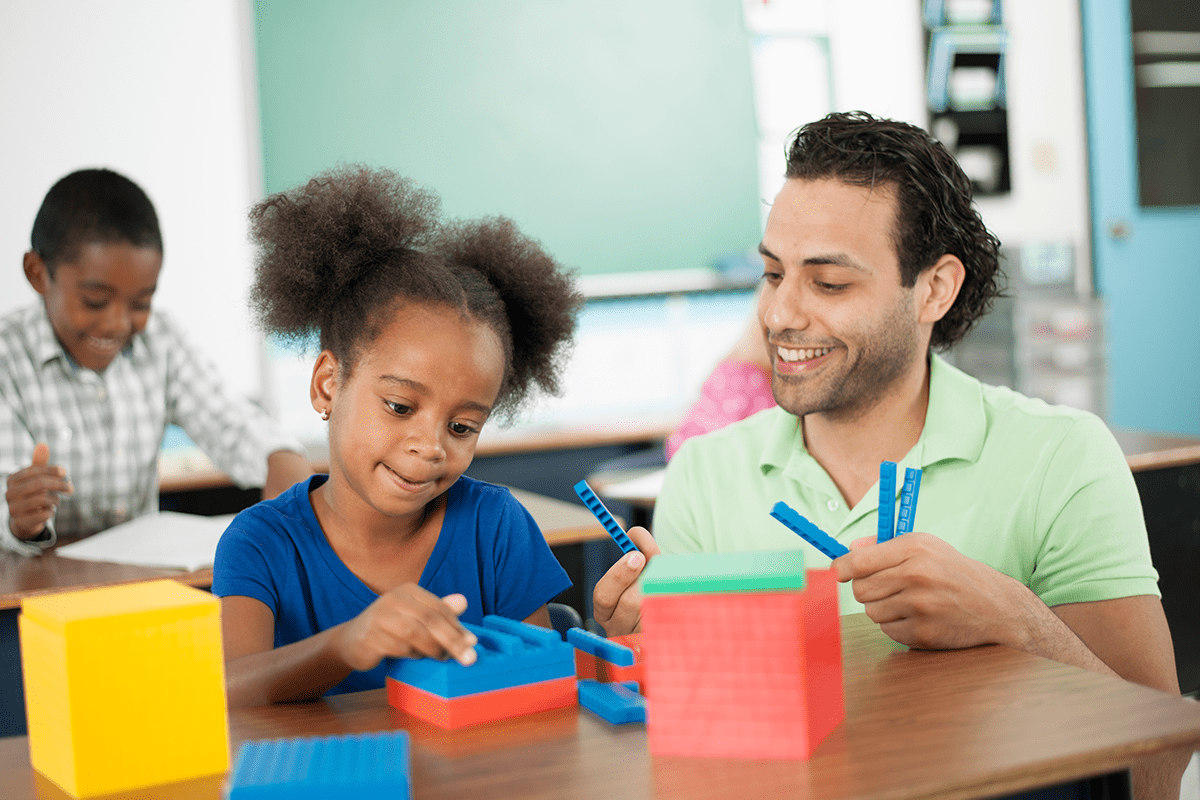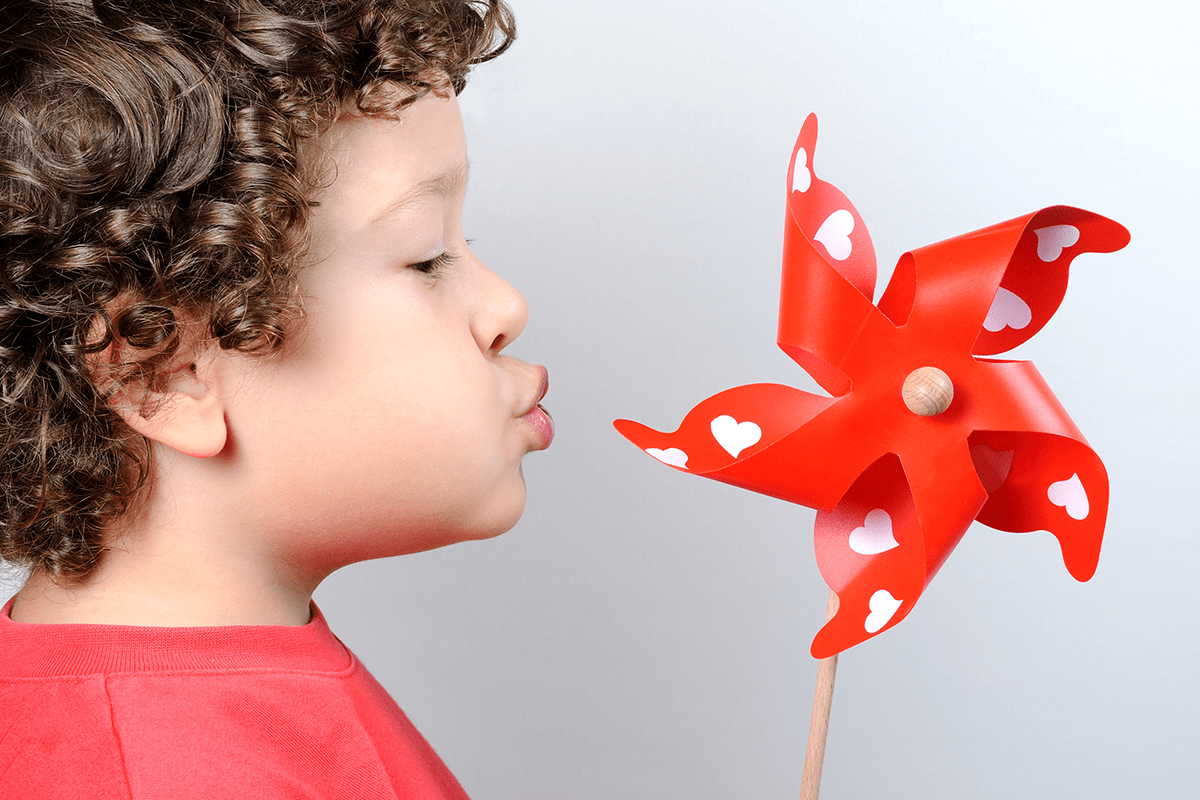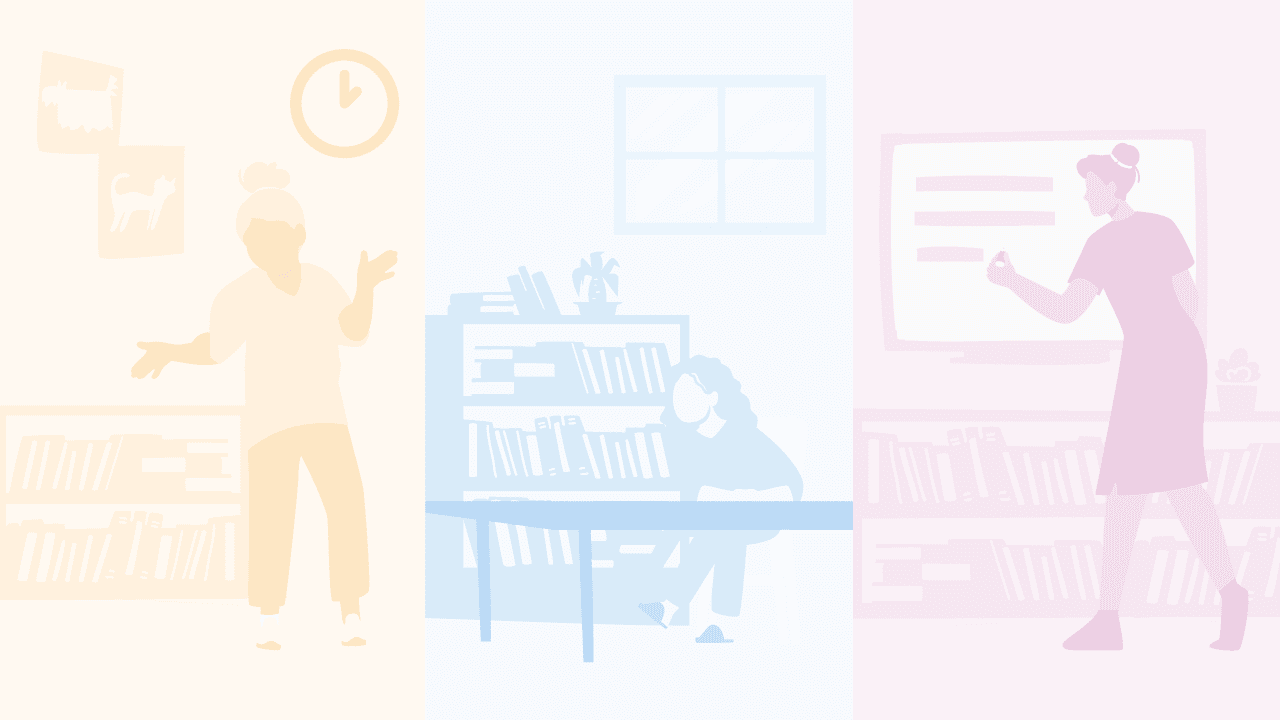Multiple Benefits of Relaxation
While research supports the benefits of systematic relaxation techniques like progressive muscle relaxation (PMR) and behavioral relaxation training (BRT), elements of these strategies can be incorporated into routines that can be effective for classroom or at-home learning. Benefits have been found for people across age ranges and abilities, and physical ones include lowered heart rate and blood pressure, reduced stress hormone levels and muscle tension, and improved digestion and blood flow. Relaxation can have a positive effect on sleep quality and can improve mood and concentration. Clearly, these benefits can result in a student who is better prepared to focus, engage, and learn.
The Importance of Practice and Individualization
Keep in mind that in order for students to successfully use calming routines, these strategies first have to be taught and practiced. Practicing a relaxation routine should be a regular part of every student’s daily schedule. By practicing these skills (and yes, they are skills) when in a calm state, students are better prepared to access the strategies when they truly need them. Incorporating relaxation routines throughout the day can also go a long way in preventing problematic behaviors by allowing students to return to a calm, relaxed state before escalating too far. And as they gain independence with this skill, they are then able to carry the strategies with them anywhere they go, whether they are moving throughout the school building, on the playground, learning from home, or out in the community.
It is extremely important to know your student when developing a relaxation routine that will truly work—one student’s calming routine may look very different from another’s. Every child has a different response to sensory input; for example, knowing that your student really enjoys spinning but reacts poorly to tactile stimuli can help direct which activities you include in an effective routine.
3 Steps in Each Relaxation Routine
Effective relaxation routines should include three steps that provide the opportunity to engage a student’s body, mind, and breath.

Get Moving!
Whether your student is able to move about freely or must remain in one spot, there are many ways to engage the body that can serve to calm them. Gross motor activity that engages the major muscle groups is extremely effective. If your student has access to a wide-open space (gym, playground, backyard, etc.) then running, walking, skipping, or scootering may be part of the routine. If they respond well to back-and-forth or spinning movements, then a swing, a seesaw, a merry-go-round, or just twirling in place can be helpful. For those who must, or prefer, to stay in one place, it is still possible to engage the entire body. Find a quiet corner of the room, or incorporate activities that can be done at a student’s desk or work table. Gross motor activities in this setting can include lifting a weighted object (like a medicine ball), pushing against the wall, stretching, bouncing on an exercise ball, jumping or running in place, or systematically tensing and relaxing different muscles throughout the body.

Mind Games
Engaging the student’s mind serves as a redirection from other things in the environment that may be distracting or problematic. For concrete learners, this can be something as simple as completing a matching activity (color matching, shape matching) or coloring a picture of a preferred image (think of a high-interest character or topic), or it could be a fine motor activity like stringing beads or stacking blocks. Encouraging visual imagery is also a great option for engaging a student’s mind. Something as simple as looking at pictures of interesting things can serve to calm the mind. Pictures of Mom and Dad, images of preferred characters, or pictures of the beach can be engaging and calming. The more fascinating and enjoyable the activity and materials are to your student, the more relaxing they will be. So really consider your student’s preferences and think creatively about how to include them.

Just Breathe
The third element of an effective relaxation routine is breath. It is an opportunity for the student to slow their body down and to focus on themselves rather than distractions in the environment. Concrete learners can benefit from the use of objects to support breathing routines. Asking a student to “smell a flower” can have more meaning than simply asking them to take a deep breath. Then by “blowing out a candle” (unlit, of course!), you can ensure they are exhaling a deep breath. A pinwheel or other spinning object is a great alternative to a candle for students motivated by spinning toys. Having these objects on hand can serve as concrete visual supports that help to engage and keep them interested.
Supports That Lead to Greater Success
When teaching and practicing a relaxation routine, remember the benefits of using visual supports. Concrete learners benefit from a visual cue to begin a routine, so choose an object or other tangible cue that signals when it is time to start a routine. For many students, an object that is used in the first step of the routine can be very meaningful. Also think of ways to use visual cues (objects or pictures) to signal each step of the routine. For a routine that includes jumping rope, stacking blocks, and deep breathing, use a jump rope to cue the start of the routine and a block and flower to cue the remaining activities.
How will your student know how many breaths to take, how many laps to run, or how long to look at an image? Consider how to signify duration or quantity within each activity. Use small objects to count laps by having your student place a poker chip in a bin for each lap completed. When the chips are gone, they are done running. If your student is to take three deep breaths, give them three flowers to “smell” and three candles to “blow out.” When looking at an image, teach them to name the people, count the animals (say, when looking at a jungle scene), or sing a song. Giving your student a concrete way to know when the activity is done will help ease the transition to the next activity.
As mentioned above, incorporating a student’s special interest can go a long way in getting and keeping the student’s attention and increasing engagement. For example, if your student really likes rainbows, engage their body by having them stretch their arms up to reach the top of the rainbow and bend to each side, mimicking the arch of the rainbow. Then engage their mind by having them color a picture of a rainbow or name the colors. And finally, use different colored counters to count breaths.
Lastly, as you consider your student’s strengths and needs, keep in mind that a relaxation routine should be just that—relaxing. Only a few minutes of moving the body and redirecting the mind can bring major benefits. Concrete learners respond best to simple routines, so try not to overcomplicate things. Keep activities enjoyable and engaging for the best results.



